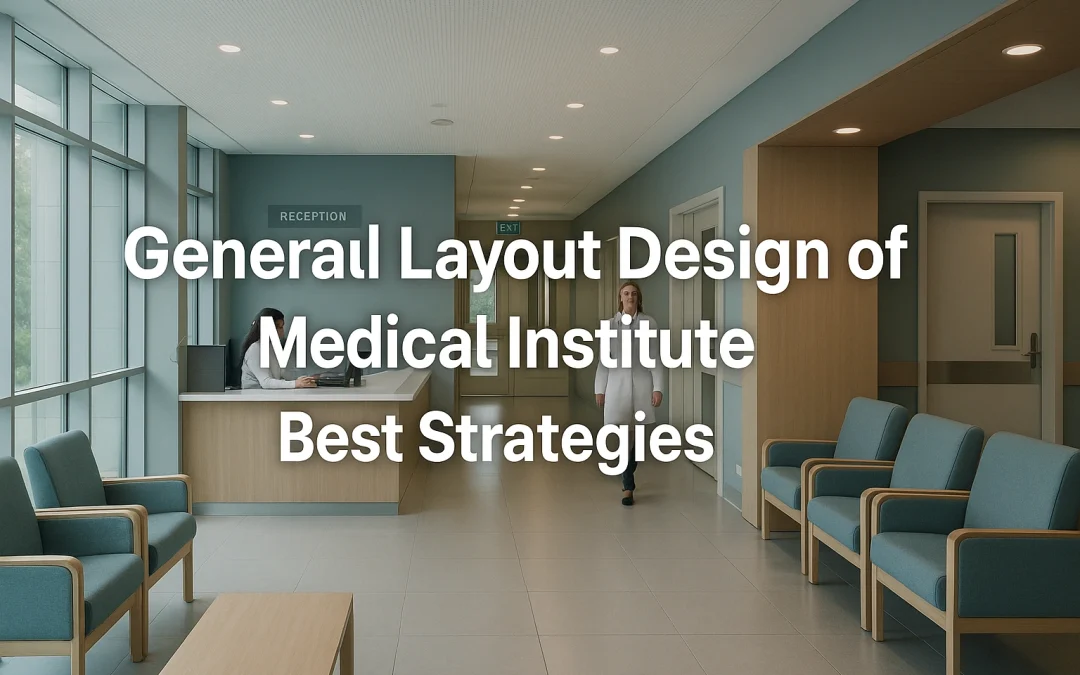Introduction to the General Layout Design of Medical Institute
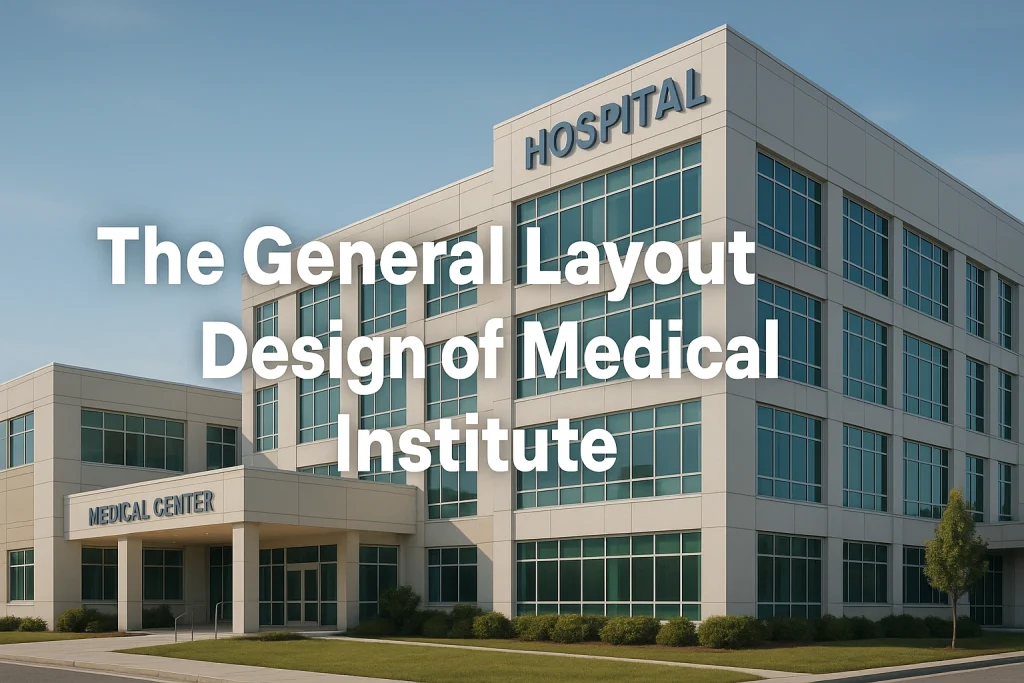
The general layout design of a medical institute is far more than an architectural blueprint — it is the backbone of a functional, efficient, and healing environment. Every spatial decision, from the placement of departments to the alignment of corridors, influences how effectively healthcare is delivered. A well-conceived layout ensures seamless movement of patients, staff, and resources, enabling the institute to function as a cohesive organism rather than a collection of isolated spaces.
The importance of layout design extends beyond aesthetics or compliance. It directly affects clinical efficiency, infection control, patient comfort, and even the financial sustainability of the institution. When departments are logically zoned — with diagnostics close to emergency units, wards shielded from high-traffic corridors, and administrative areas easily accessible — the entire ecosystem performs better. Studies in healthcare architecture have consistently shown that thoughtful spatial planning can reduce patient stress, minimize staff fatigue, and improve overall treatment outcomes (ScienceDirect 2024).
Moreover, the general layout design of medical institute must anticipate evolution. Medical technologies, teaching methods, and patient volumes change rapidly, demanding designs that are flexible and scalable. Future-ready layouts incorporate modular expansion zones, digital infrastructure for telemedicine, and sustainable design principles that reduce operational costs while supporting environmental goals.
Ultimately, the success of a medical institute depends on how its physical environment enables healing, collaboration, and innovation. This guide explores the foundational elements of planning, zoning, circulation, and sustainability that define a high-performing, patient-centric medical institute layout — one designed not just for today’s needs, but for decades of service to come.
2.Defining the Scope: What We Mean by Medical Institute in Layout Design

A “medical institute” in this context refers to any facility that delivers clinical healthcare services, education or research within a structured built environment — it could range from a teaching hospital, a specialty institute, to a multi-department medical campus. While many layout design principles overlap with hospital architecture, the term emphasises the institutional and often multi-functional nature: inpatient wards, outpatient clinics, diagnostic and imaging departments, teaching labs, research wings and admin zones. Understanding this context helps shape how we approach the general layout design of medical institute: we must cater to multiple stakeholder groups (patients, staff, learners, visitors), multiple functions (treatment, education, research) and multiple temporal needs (immediate operations vs long-term flexibility).
3.Key Considerations Before Starting the Layout Plan
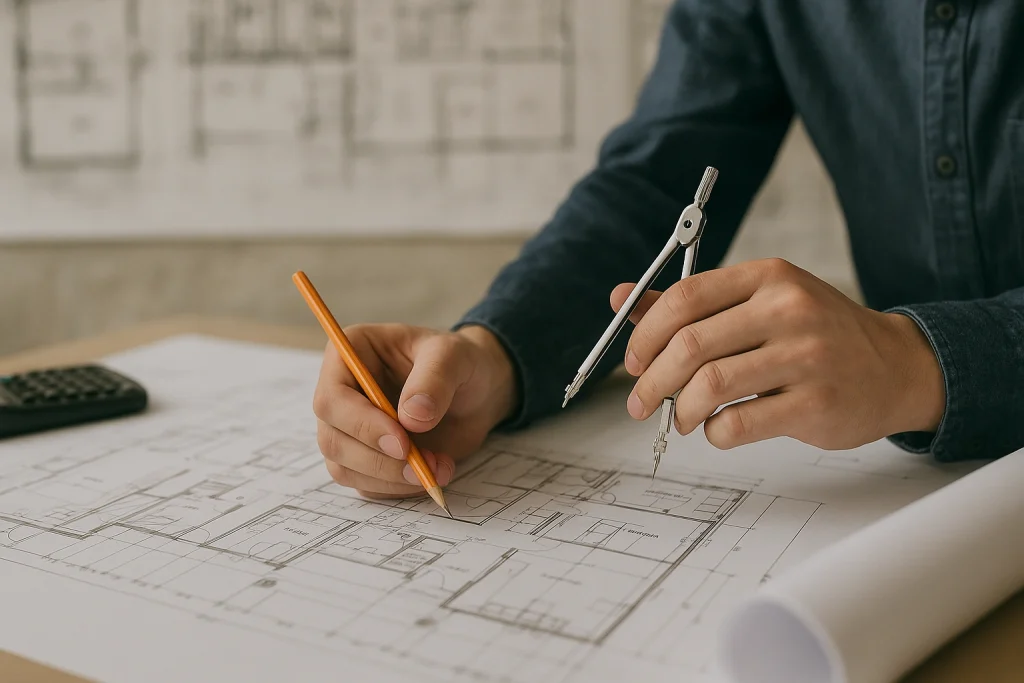
3.1 Site Selection & Context
Before any architectural drawing, the site selection and context set the tone for everything else. When planning the general layout design of medical institute, factors such as accessibility (proximity to major roads, public transit), surrounding land use, infrastructure (electricity, utilities, drainage), and environmental context (noise, sunlight, views) are vital. For example, a mid-sized healthcare facility may require dedicated water, power backup, and at least partial green buffer to support healing spaces.
3.2 Regulatory Requirements & Building Codes
Healthcare architecture is heavily regulated. The layout must comply with national building codes, infection control standards, fire safety, accessibility (ramps, lifts), as well as medical facility guidelines. The general layout design of medical institute cannot ignore corridors widths, dedicated clean/dirty pathways, vertical circulation requirements, and separation of functional zones.
3.3 Future-Proofing & Flexibility
One hallmark of a strong medical-institute layout is flexibility: ability to adapt to new medical technologies, changed workflows, expanded departments, or new pandemics. The design should incorporate modular growth zones, reserve spaces for expansion, and allow for re-use of rooms. In this way, the layout is not just built for today, but for tomorrow’s needs.
4.Core Principles of Layout Planning & Zoning
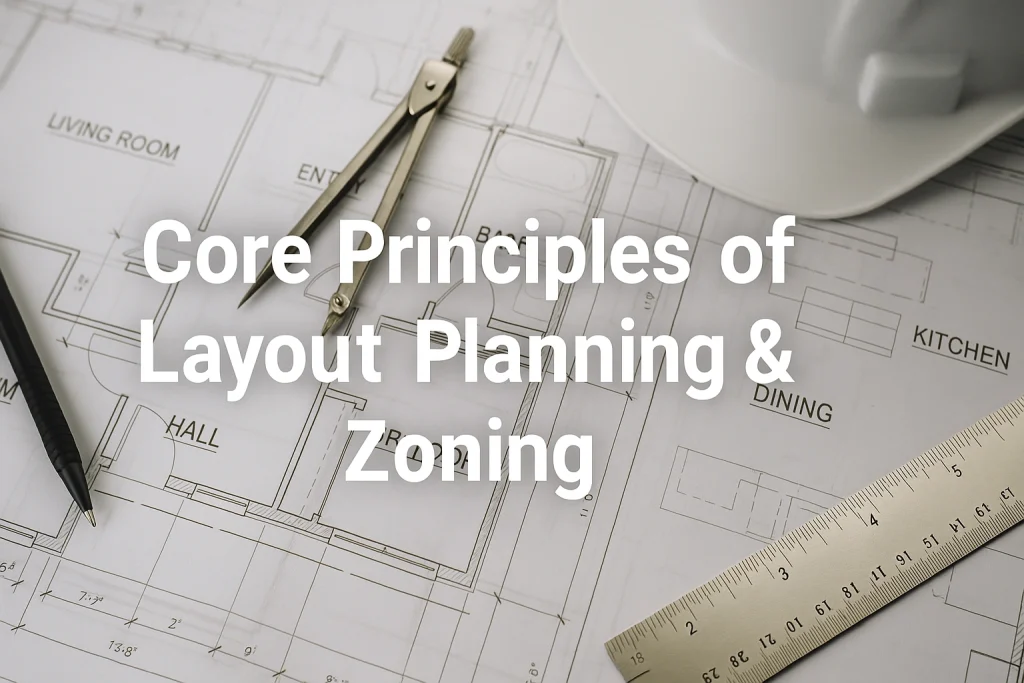
4.1 Functional Zoning: Patient, Staff & Support Zones
In the general layout design of medical institute, zoning is fundamental. We typically divide into three major zones: patient/visitor zone, staff/clinical zone, and support/logistics zone. For example: public reception and waiting areas near the entrance; clinical departments (wards, OPD, diagnostics) centrally located; support services (sterilisation, laundry, mechanical) in less visible areas. A study noted a breakdown of space allocation: outpatient & diagnostics ~25 %, inpatient ~35 %, emergency ~10 %, admin & support ~15 %, circulation ~15 %.
4.2 Circulation & Patient Flow Design
Circulation — how people move through a building — is often what separates an average layout from an exceptional one. The general layout design of medical institute must minimise patient and staff travel distances, avoid cross-paths of clean and dirty traffic, and support intuitive way-finding. For instance, emergency and radiology should be located near main entrance for quick access. Optimal circulation reduces delays and enhances safety.
4.3 Vertical Versus Horizontal Layout Strategies
Depending on site size and geography, one may opt for a horizontal spread or a stacked vertical model. For many teaching institutes with space constraints, vertical stacking of clinical, teaching and admin floors makes sense — but requires careful lift/stair planning, vertical service shafts, and structural planning. For example, some institutions place patient rooms on lower levels (quieter) and utilities/staff zones above to reduce patient exposure to noise. Selection of vertical vs horizontal has a significant impact on the general layout design of medical institute.
5.Designing for Patient Experience & Way-Finding
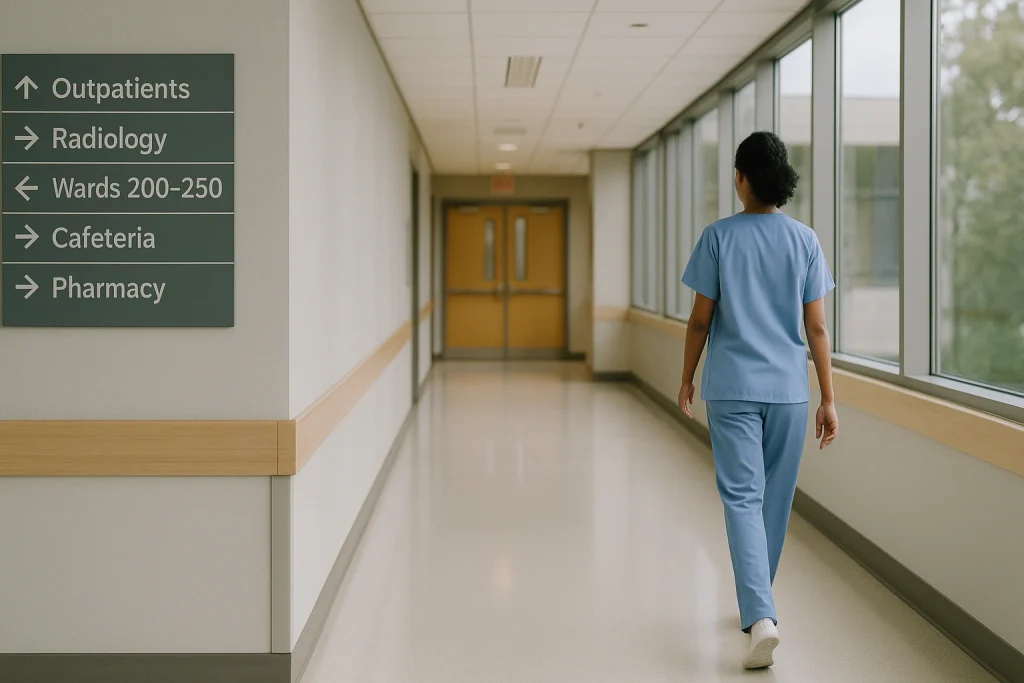
5.1 Reception & Waiting Areas
First impressions matter. In the general layout design of medical institute, positioning of reception and waiting areas is key. These zones should be accessible, visible from the entrance, and have direct links to major clinical paths. Comfortable seating, natural light, clear signage, and filtered views of the outside contribute to patient comfort and reduce stress.
5.2 Clear Signage & Navigation Paths
Way-finding is critical in a complex institute. Patients, visitors and staff must navigate without confusion. Designers recommend signage every 15-20 metres, digital kiosks for navigation, and clear markers distinguishing zones. The layout should avoid long, ambiguous corridors and provide visual cues.
5.3 Privacy, Comfort & Healing Environments
Patient rooms and stay areas should prioritise comfort, daylight, views of nature, acoustics and ergonomic furniture. A layout that clusters patient beds away from noisy zones (diagnostics, lifts) and places windows to promote healing can reduce recovery times. Including family space in patient rooms improves experience.
6.Operational Efficiency & Staff Workflow Optimization

6.1 Staff Workspaces & Support Zones
The general layout design of medical institute must serve not only patients but also the staff who deliver care. Centralised nursing stations, easily accessible patient rooms, and logical adjacency to supply and equipment rooms enhance workflow. For example, locating the nursing station centrally amid exam and patient rooms reduces walking time.
6.2 Diagnostics, Imaging & Treatment Adjacency
Diagnostic zones (imaging, labs) must be placed in adjacency with clinical departments to minimise patient transfer and waiting. The layout should allow smooth movement of patients and samples, with dedicated access for staff and service. This demands thoughtful mapping of adjacency in the general layout design of medical institute.
6.3 Service Corridors & Logistics Planning
Behind the scenes, the support services – sterilisation, pharmacy, supplies, waste disposal – require dedicated corridors and access separate from public and patient circulation. Effective logistics planning ensures that supplies reach clinical zones efficiently, and service traffic doesn’t interfere with patient‐visitor zones.
7.Sustainability, Accessibility & Regulatory Compliance

7.1 Sustainable Architecture Strategies
Modern institutes must be sustainable. The general layout design of medical institute should incorporate natural lighting, green spaces, recycled materials, energy efficient systems and landscaping that supports healing. For example, rainwater harvesting or LED lighting may be integrated.
7.2 Accessibility Standards & Inclusive Design
Accessibility is non-negotiable. The layout must support wheelchair access, lifts, ramps, wide doorways, tactile signage, hearing loop systems — ensuring all patients and visitors can navigate seamlessly. This is part of regulatory compliance and inclusive design in the general layout design of medical institute.
7.3 Infection Control & Safety Layouts
In the healthcare context, layout equals safety. Paths for clean vs contaminated traffic, isolation rooms with negative pressure, hand hygiene stations at key points — all are layout decisions. Studies emphasise segregation of patient, staff and service flows to control infection.
8.Building Typologies & Contextual Variants

8.1 Teaching-Medical Institutes & Campus Layouts
If the medical institute also includes teaching (labs, classrooms, student housing) the layout must integrate educational and clinical functions. The general layout design of medical institute in this case often adopts a campus approach: separate wings or buildings for research, teaching, hospital care, with shared services and green space.
8.2 Multi-Department Facilities & Modular Growth
Large institutes may house many specialties – surgery, oncology, cardiology, etc. The layout must support departmental modularity so one can add or adjust wings. The general layout design of medical institute should anticipate this, with reserved growth zones and flexible internal partitions.
8.3 Developing Country Contexts & Low-Cost Models
In resource-constrained settings, layout design must balance cost, functionality and local context. The general layout design of medical institute may emphasise horizontal expansion, natural ventilation, multi‐function rooms, and simpler materials. Tailoring the layout to context ensures the building remains functional and maintainable long‐term.
9.Case Studies & Floor Plan Examples (Brief overview)
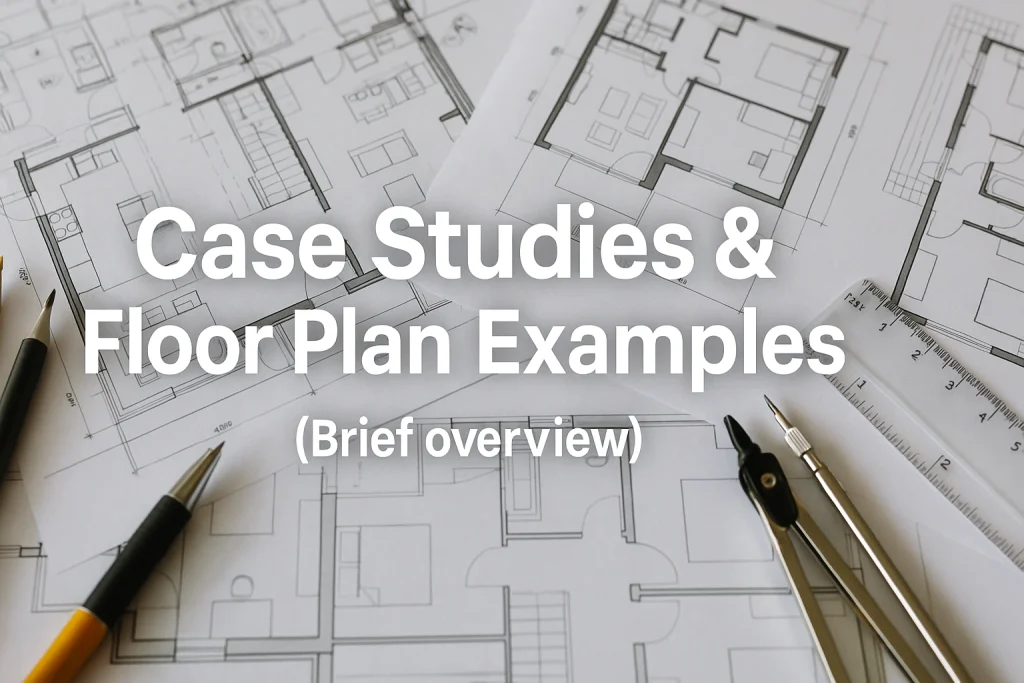
9.1 International Examples of Medical Institute Layouts
A gallery of 50 healthcare floor plan examples by ArchDaily illustrates how different architects approach spatial organization for hospitals and institutes. These examples highlight recurring patterns: clear zoning, light-bearing patient wings, and functional adjacency.
9.2 Lessons from Hospital Floor Plan Studies
Research such as “Architectural spatial layout design for hospitals: A review” emphasises that layout critically influences patient outcomes, staff efficiency and quality of care. Key lessons: reduce travel distances, support flexible rooms, provide good daylight, segregate clean/dirty flows.
10.Implementation Roadmap: How to Develop Your Layout Design

10.1 Stakeholder Engagement & Design Brief
Start by engaging all stakeholders: clinicians, administrators, students (if applicable), facility managers and patients. Develop a comprehensive design brief that reflects service lines, volumes, future growth, site constraints and budget.
10.2 Schematic Design & Functional Adjacency Matrix
Create a schematic layout: map out departmental adjacencies (e.g., imaging next to emergency, wards near ICU), circulation paths, vertical connections, and service flows. Develop an adjacency matrix to quantify proximity requirements across functions.
10.3 Validation, Mock-ups & Iteration
Use mock-ups, walk-throughs and full-scale simulations to test how staff, patients and supplies will move. Validate that waiting areas feel comfortable, corridors are not too long, service zones are hidden. Iterate the layout design of medical institute until it flows smoothly.
10.4 Construction & Post-Occupancy Evaluation
During construction ensure major layout zones and vertical shafts comply with design. After occupation evaluate how staff and patients move through the building, identify bottlenecks, and plan adjustments if required. Post-occupancy evaluation ensures the general layout design of medical institute delivers the intended benefits.
11.Frequently Asked Questions (FAQs)

Q1: How much area do I need for a 150-bed medical institute?
Answer: It depends on service mix, location and standards, but for mid-sized multi-specialty hospital many sources estimate around 100,000 to 500,000 sq ft depending on region and bed counts. HOSPITAL & LAB MANAGEMENT SOFTWARE
Q2: Should I prioritise horizontal or vertical layout?
Answer: It depends on site size, context and cost. Horizontal spreads are easier to navigate; vertical stacks are efficient for constrained sites but require better vertical circulation and services planning.
Q3: How do I incorporate sustainability in layout design?
Answer: Use natural lighting and ventilation, orient wards for daylight, include green spaces, modular zones for future re-use, and energy-efficient systems. Sustainable layout choices strengthen the institute’s resilience.
Q4: What role does infection control play in layout?
Answer: Huge. Layout must separate clean vs contaminated flows, include isolation zones, allow for dedicated staff/service paths, and follow standards for ventilation and hygiene.
Q5: Can a single layout suit both patient experience and operational efficiency?
Answer: Yes — with careful design. These are not opposing goals. A well-zoned, logically laid out institute supports both. For example, placing waiting areas near gardens improves experience, while aligning clinical zones reduces staff travel and increases efficiency.
10.Conclusion: Delivering a Functional, Healing, and Future-Ready Medical Institute
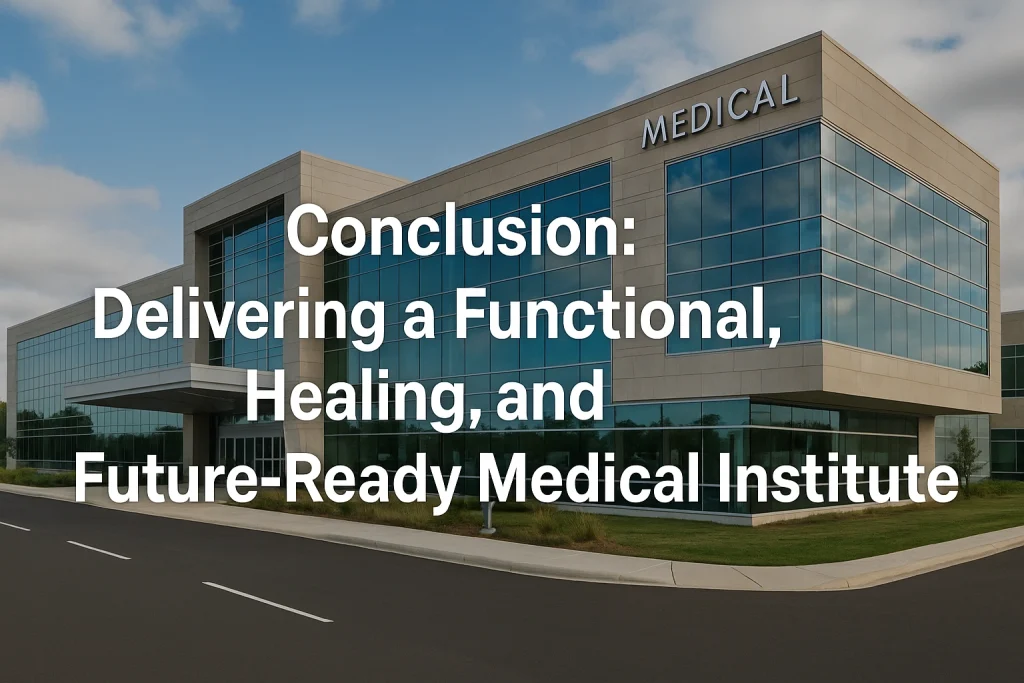
The general layout design of a medical institute represents the intersection of architecture, healthcare strategy, and human well-being. It is not merely about drawing floor plans or arranging functional areas — it is about creating an environment that supports healing, operational efficiency, education, and long-term adaptability. Every square meter in a medical institute must serve a purpose: guiding patient journeys, enabling staff collaboration, and fostering an atmosphere of safety and trust.
An effective layout begins with a clear understanding of clinical functions and patient needs. When spaces are strategically zoned — such as separating outpatient from inpatient areas, streamlining diagnostics access, and providing private yet accessible patient wards — the overall system becomes more intuitive and productive. Proper circulation planning reduces travel time, limits infection risks, and enhances patient comfort. Integrating sustainability principles, from natural lighting and ventilation to energy-efficient infrastructure, ensures the facility remains environmentally responsible and economically viable over time.
Equally important is the consideration of scalability and resilience. A future-ready medical institute layout anticipates growth — new departments, advanced technologies, or expanded educational facilities — without compromising functionality. This flexibility is what transforms a static structure into a dynamic healthcare ecosystem capable of evolving with medical advancements and community needs.
Beyond spatial organization, the true success of layout design lies in its human impact. The design should promote dignity for patients, empowerment for healthcare workers, and a seamless experience for visitors. It should encourage interdisciplinary collaboration, support teaching and research, and reflect the institution’s commitment to excellence in care.
In conclusion, the general layout design of medical institute is a synthesis of science, empathy, and foresight. By integrating zoning logic, workflow optimization, sustainability, and human-centered principles, architects and planners can create medical environments that heal, inspire, and endure. A well-designed layout is not just a framework for healthcare delivery — it is a living system that shapes the future of medicine itself.

